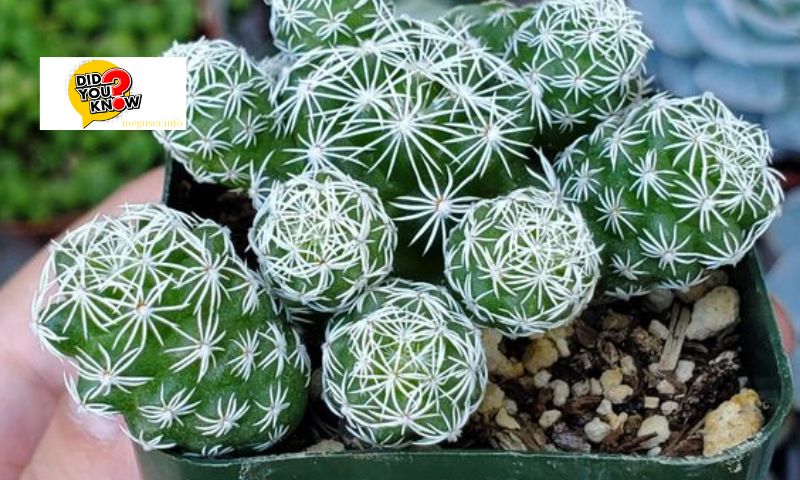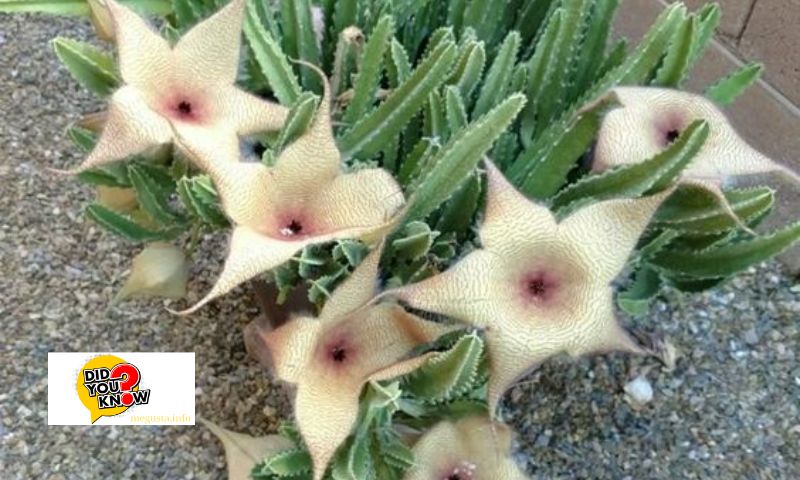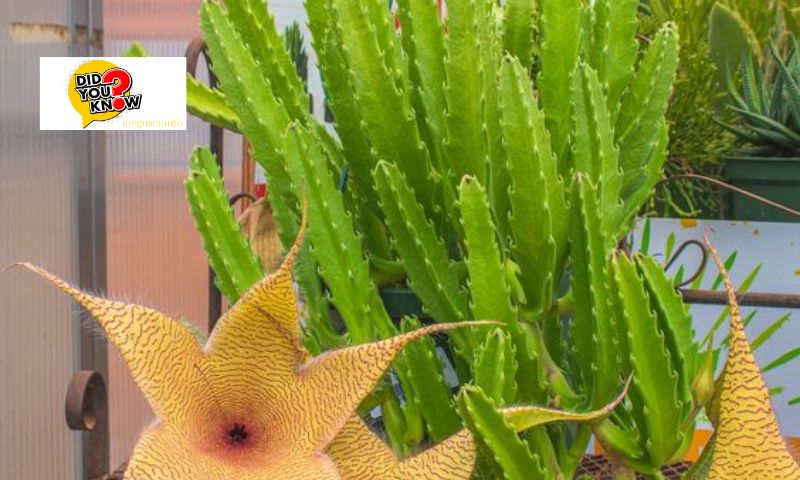Cultivating the starfish cactus, a unique and intriguing plant, can be a rewarding experience for gardeners and plant enthusiasts alike. Known for its striking appearance and relatively low maintenance requirements, the starfish cactus (Stapelia gigantea) adds an exotic touch to any plant collection. This guide from Megusta.info will walk you through the technique of cultivating starfish cactus, from understanding its needs to mastering the care routine that keeps it thriving.
Understanding Starfish Cactus

The starfish cactus, scientifically known as Stapelia gigantea, originates from South Africa. It’s named for its star-shaped flowers, which are large, and fleshy, and often emit a distinctive odor to attract pollinators like flies. This unique characteristic makes it both fascinating and a topic of conversation among plant lovers. Despite its somewhat off-putting smell, the plant’s aesthetic appeal and easy-care nature make it a popular choice.
Physically, the starfish cactus is a succulent with thick, ribbed stems that can grow up to 12 inches tall. The stems are green, often with a reddish tinge, and they produce striking star-shaped flowers that can be as large as 16 inches in diameter. Understanding these characteristics is essential for mastering the technique of cultivating starfish cacti.
Preparing for Cultivation

To successfully cultivate the starfish cactus, creating an ideal environment is crucial. Start by selecting a location that mimics its natural habitat. The starfish cactus thrives in warm, sunny conditions, ideally with temperatures ranging between 60-80°F (15-27°C). It can tolerate some shade but performs best with plenty of indirect sunlight.
The soil is another critical factor. Starfish cacti require well-draining soil to prevent root rot, a common issue with succulents. A cactus or succulent potting mix is ideal, or you can make your own by combining regular potting soil with sand or perlite to improve drainage. Ensure the pot has adequate drainage holes.
Gather the necessary tools and materials: pots with drainage holes, cactus potting mix, perlite or sand, watering can, and a clean, sharp knife for cuttings.
Planting Starfish Cactus
There are two primary methods for planting starfish cactus: from seeds or from cuttings. Each method has its own set of steps and considerations.
Propagation from Seeds:
- Seed Selection: Choose high-quality seeds from a reputable source.
- Soil Preparation: Fill a shallow tray with a well-draining cactus mix.
- Sowing Seeds: Sprinkle the seeds evenly over the soil surface, then lightly cover them with a thin layer of soil or sand.
- Watering: Mist the soil lightly with water to moisten it without making it soggy.
- Germination: Place the tray in a warm, bright location with indirect sunlight. Keep the soil moist but not wet. Seeds should germinate in 2-3 weeks.
Propagation from Cuttings:
- Cutting Selection: Choose a healthy stem from a mature plant. Use a clean, sharp knife to cut a segment about 4-6 inches long.
- Drying: Allow the cutting to dry for a few days in a shaded area. This helps to prevent rot.
- Planting: Once the cut end has been calloused, plant it in a pot filled with well-draining soil. Insert the cutting about 1-2 inches into the soil.
- Watering: Water the cutting lightly and place the pot in a warm, bright location with indirect sunlight.
Care and Maintenance

Proper care is essential for the healthy growth of starfish cactus. Here’s a comprehensive guide to maintaining your plant:
- Watering Schedule: Watering is crucial but should be done sparingly. Overwatering can lead to root rot. Water the plant thoroughly when the soil is completely dry. During the growing season (spring and summer), this might be once every two weeks. In the dormant season (fall and winter), reduce watering to once a month or even less.
- Fertilization: Fertilize the starfish cactus during the growing season with a diluted, balanced liquid fertilizer. A cactus-specific fertilizer is ideal. Apply it once a month to encourage healthy growth and flowering.
- Pruning and Shaping: Pruning helps maintain the shape and size of your cactus. Remove any dead or diseased stems with a clean, sharp knife. This not only keeps the plant looking its best but also prevents the spread of diseases.
- Pest and Disease Management: Starfish cactus can be susceptible to pests like mealybugs and spider mites. Inspect the plant regularly and treat infestations promptly with insecticidal soap or neem oil. Root rot, caused by overwatering, is another common issue. Ensure your plant has well-draining soil and avoid waterlogged conditions.
Troubleshooting Common Issues
Even with the best care, you may encounter some problems. Here’s how to address common issues:
- Yellowing Leaves: Yellowing leaves often indicate overwatering or poor drainage. Check the soil and adjust your watering schedule accordingly. Ensure the pot has adequate drainage holes.
- Root Rot: Root rot is a severe issue caused by waterlogged soil. If you suspect root rot, remove the plant from its pot, trim off affected roots, and replant it in fresh, well-draining soil.
- Pest Infestations: If you notice pests, isolate the affected plant to prevent the spread. Treat with insecticidal soap or neem oil, and clean the area around the plant.
Other Problems:
- Wrinkled Stems: This usually indicates under-watering. Increase watering frequency, ensuring the soil dries out between waterings.
- No Flowers: Lack of blooms can be due to insufficient light or nutrients. Ensure your plant gets enough indirect sunlight and consider fertilizing during the growing season.
Benefits of Cultivating Starfish Cactus
Cultivating the starfish cactus offers several benefits beyond its visual appeal:
- Aesthetic Appeal: The starfish cactus is an eye-catching addition to any plant collection, with its unique star-shaped flowers and thick, ribbed stems.
- Environmental Benefits: As a succulent, the starfish cactus is efficient in water usage, making it an eco-friendly plant choice. It can thrive in arid environments, contributing to biodiversity.
- Low Maintenance: Compared to many other plants, the starfish cactus requires minimal care. Its low-maintenance nature makes it ideal for busy individuals or those new to gardening.
Conclusion
The technique of cultivating starfish cactus involves understanding its unique needs and providing the right environment and care. By following the steps outlined in this guide, you can enjoy the beauty and intrigue of this remarkable plant in your own home. Remember, patience and attention to detail are key to successful cultivation.
9. FAQs
1. How often should I water my starfish cactus? Water your starfish cactus thoroughly when the soil is completely dry. This usually means once every two weeks during the growing season and less frequently during the dormant season.
2. Can I grow starfish cactus indoors? Yes, starfish cactus can be grown indoors as long as it receives plenty of indirect sunlight and is kept in well-draining soil.
3. What should I do if my starfish cactus gets pests? Isolate the affected plant and treat it with insecticidal soap or neem oil. Regularly inspect your plants to catch infestations early.
4. Why are my starfish cactus leaves turning yellow? Yellowing leaves often indicate overwatering. Check the soil moisture and ensure the pot has proper drainage. Adjust your watering schedule as needed.
5. How can I encourage my starfish cactus to flower? Ensure your cactus gets enough indirect sunlight and is fertilized monthly during the growing season. Adequate light and nutrients are crucial for blooming.

